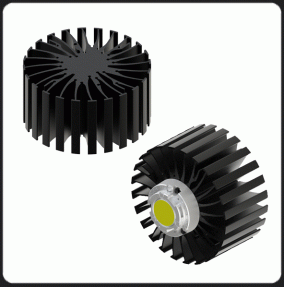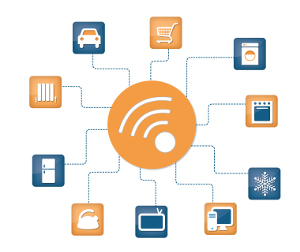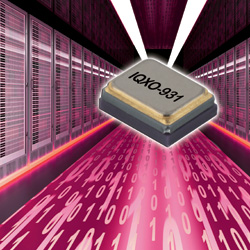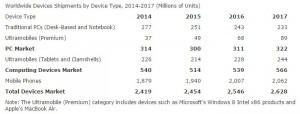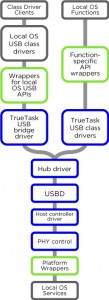
Sony Xperia Z Ultra, with a 6.44-inch touchscreen
Sales of phones with 5 inch plus screens, so called “phablets”, will overtake tablet sales in 2015, reports IC Insights.
Shipments of 5 inch plus phones will reach 252 million units in 2015, which is a 66% increase from the 152 million sold in 2014.
Strong growth in large-screen smartphones is having a major impact on tablet unit sales, which are forecast to increase just 2% in 2015 to 238 million units.
Strong sales of large-screen smartphones will continue in the next three years while the tablet market struggles with low single-digit percentage growth through 2018.
Large-screen smartphone shipments are forecast to climb by a compound annual growth rate (CAGR) of 40% between 2014 and 2018, while tablet unit shipments will rise by a CAGR of just 3% in this four-year period.
Large-screen smartphones are having the biggest impact on mini tablets, which saw a rise in popularity in the past few years. Mini tablets have 7- to 8.9-inch displays and typically run the same software as smartphones.
The phablet segment is expected to account for 17% of total smartphone shipments in 2015, which are forecast to be about 1.5 billion handsets. Phablets will represent 21% of the 1.7 billion smartphones that are forecast to be shipped in 2016. Phablet sales are projected to reach 30% of the nearly two billion total smartphones shipped in 2018.
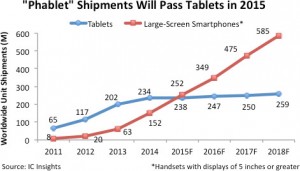
Rise of the Phablet
Tablet unit sales have nearly stalled out because incremental improvements in new models have not been enough to convince owners of existing systems to buy replacements. More consumers are opting to buy new phablets instead using both a smartphone and tablet. Large-screen smartphones have gained traction because more handsets are being used for video applications (including streaming of TV programs and movies) in addition to Internet web browsing, video gaming, GPS navigation, and looking at digital photos.
The market for large-screen smartphones received a boost from Apple’s highly-successful iPhone 6 Plus model, which started shipping in September 2014 and continued to gain momentum in the first half of 2015. Apple joined the phablet movement somewhat belatedly, but its 5.5-inch display iPhone 6 Plus smartphone played a major role in the company shipping 61.2 million iPhone handsets in the first quarter of 2015 – a 40% increase over the same quarter in 2014.
See also: Sony Xperia Z Ultra pushes the phablet envelope
david manners





